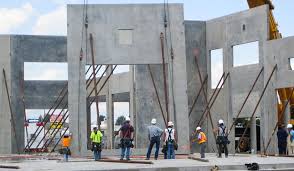 The Project Manager is responsible for many deliverables and processes for the project.
The Project Manager is responsible for many deliverables and processes for the project.
Scope, cost, communication, time, and quality.
Part of managing the cost and time is the coordination of work and subsequent reporting of work completed.
Many projects base the periodic invoicing on the percentage of work completed for that period. Others use Milestones for payments. There are other methods as well. For this post, we will work with the percentage of work based on the progress completed for each activity.
Correct updating and reporting of the schedule progress is a large part of the process. And invoicing is a big deal!
How does the PM report on the work completed? Should they use the percentage of time used for the activity? Should they use the percentage of actual cost expended? Should they use the percentage of work in place?
Depending on the contract type, there are options. Personally, I prefer to base the invoicing on the percentage of physical work in place. After all, why would an owner pay for your time or actual expenses, unless the work is T&M?
To update the progress based on physical work in place, you simply manually assign the physical percent complete for work in progress and set the scheduled finish date based on the planned remaining duration or finish date. It is that simple. The cost can be calculated in the software program or in a spreadsheet.
One of the useful things about using physical percent complete and letting the remaining duration or scheduled finish determine the duration percent complete is the variance between percent complete this creates.
If you have completed 50% of the work and the remaining duration or scheduled finish date results in a duration percent complete of 70%, it is obviously taking longer to complete this work than planned.
Perhaps this indicates a learning curve for this work. Perhaps there was a delay in material delivery once the activity started. There could be many reasons. But, the PM should know the reason and they cannot know to find out if they do not have an indicator that there is a problem.
Many people just assign the percent complete as duration percent complete and let the program assign the scheduled finish date based on the original duration and remaining duration values. This is a problem for several reasons. First, this method models the time used and remaining, not the work in place. Second, the scheduled finish date is based on the assumption that the productivity rate is as planned. Seldom is this correct. Finally, letting the duration percent complete value calculate the scheduled finish date does not model the remaining work for the project accurately. Basing an invoice on this method will result in inaccurate invoices for work in place and a schedule that is not valid for the remaining work. It’s a good practice to be accurate in these areas.
Although it is not often used in the typical layouts I see, displaying the “At Completion Duration” column in the layout also provides a quick flag for activities that are exceeding the original duration. Most layouts display the “Original Duration” and the “Remaining Duration” columns. But this doesn’t really alert the PM to a potential problem with activity progress and productivity.
I’m a big supporter of using physical percent complete for work in place and setting the scheduled finish date for work in progress by revising the remaining duration value or setting the date based on field input. I also like to display the “At Completion Duration” column in my layouts. I think providing the Project Manager with as many tools as we can to help them make intelligent decisions for managing the work is our primary function.
I’d love to hear what you think!
Please visit https://conschmanservices.com to learn more about Construction and Schedule Management Services, LLC
Please visit my LinkedIn account to learn more about me.
Please visit my “The Blue Book” ProView.
Paul Epperson CCM, PMP, PSP, PMI-SP
 In my previous posts, I described some basic schedule quality validation suggestions.
In my previous posts, I described some basic schedule quality validation suggestions. Do you diligently keep track of the work on your project’s critical path?
Do you diligently keep track of the work on your project’s critical path? You have created your project’s
You have created your project’s  You are working with a construction scheduling consultant and they use terms you’ve heard before, but you’re not 100% sure you really understand what they mean. More importantly, you’re not sure how they affect the schedule.
You are working with a construction scheduling consultant and they use terms you’ve heard before, but you’re not 100% sure you really understand what they mean. More importantly, you’re not sure how they affect the schedule. You have an approved baseline project schedule, and now you are ready to receive the first periodic schedule progress update from your contractor. That is great, progress is good. You are sharing a valid tool with your contractor to proactively managing the project. But, you still need to monitor the actual work progress and ensure the contractor is realistically updating the progress and taking corrective action as necessary to maintain the project’s scheduled plan to execute the project. How do
You have an approved baseline project schedule, and now you are ready to receive the first periodic schedule progress update from your contractor. That is great, progress is good. You are sharing a valid tool with your contractor to proactively managing the project. But, you still need to monitor the actual work progress and ensure the contractor is realistically updating the progress and taking corrective action as necessary to maintain the project’s scheduled plan to execute the project. How do